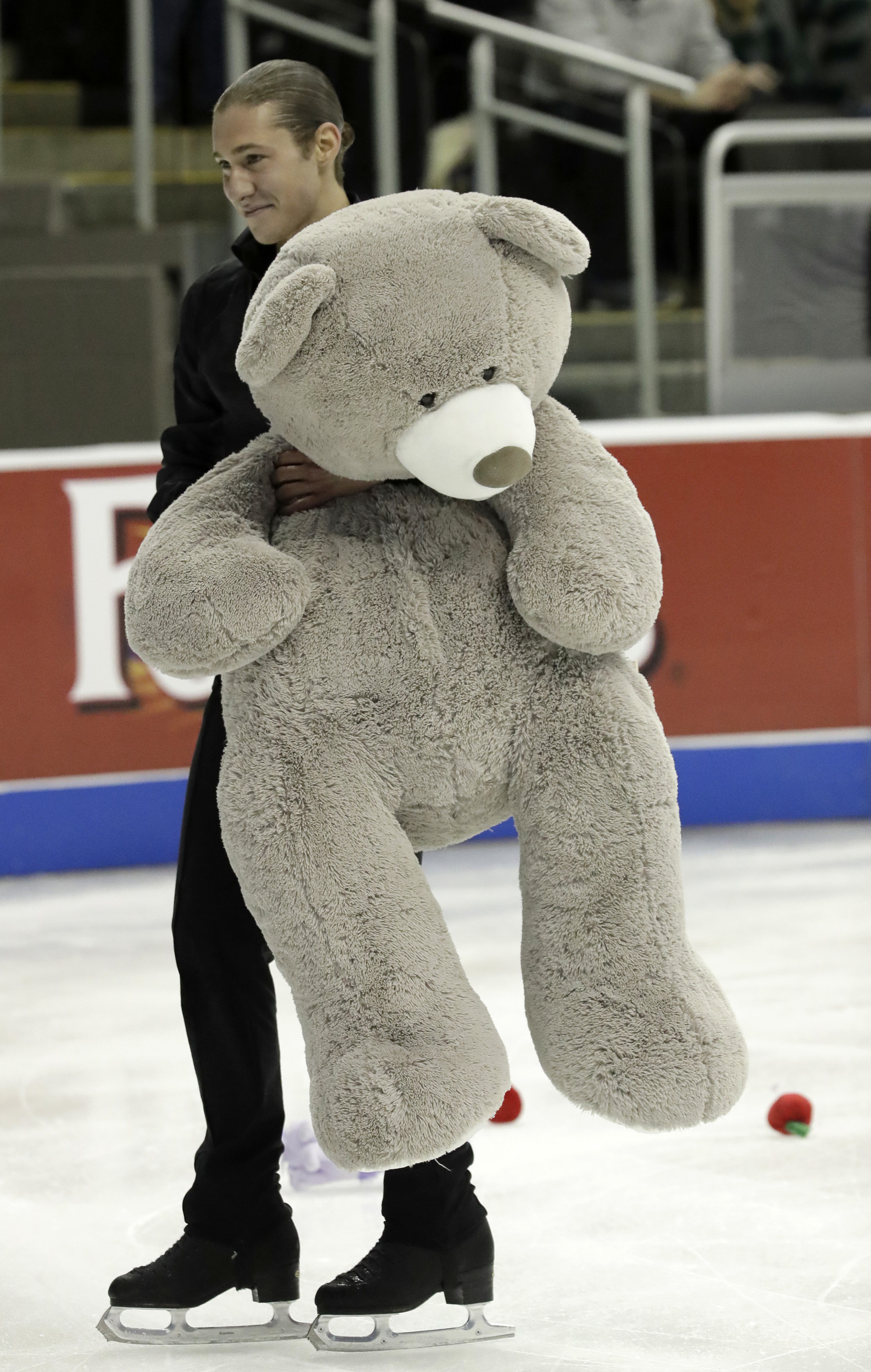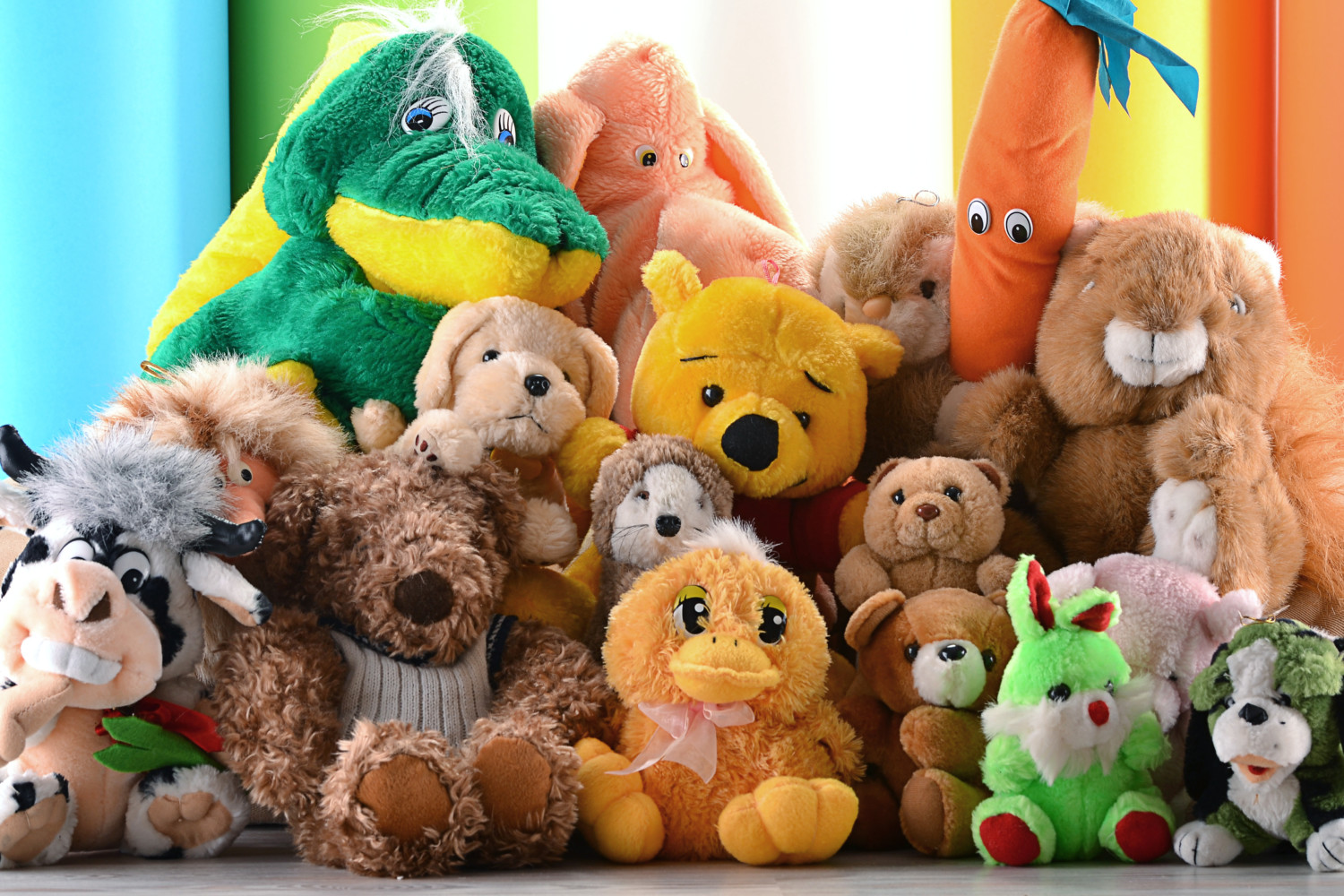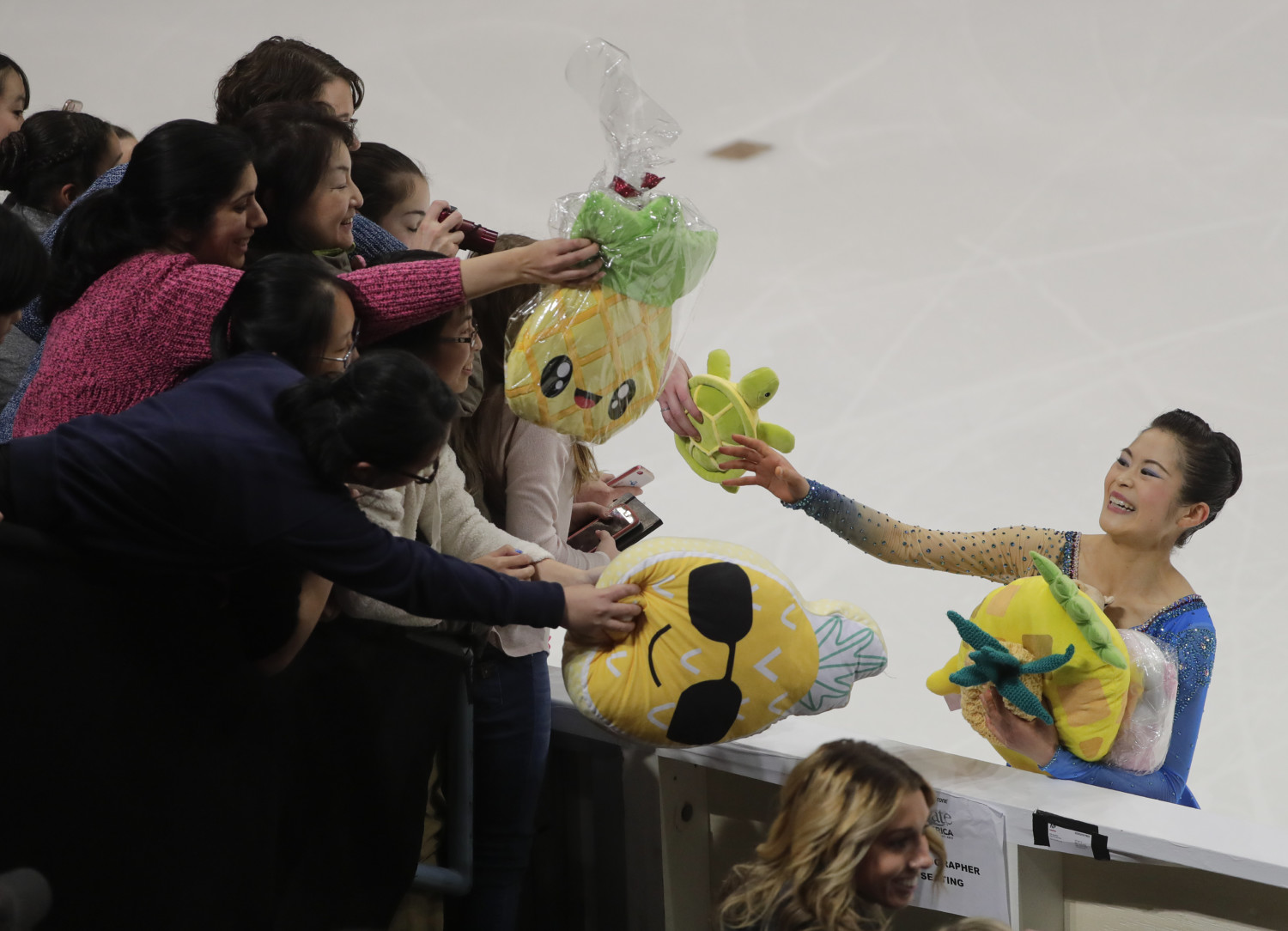If you’re a fan of figure skating, or even if you just happened to catch it every now and then on TV, you might have noticed fans throwing gifts, especially stuffed animals, on the ice when a skater finishes their routine.
While it’s pretty obvious that the goodies are meant to be gifts to the performer, why would fans of skating choose stuffed animals as the way to honor their favorite athletes?
It might seem a little strange, but it turns out there are multiple factors that have made tossing stuffed animals onto the ice a tradition, including practicalities like avoiding a mess on the ice to concerns over the safety of the skaters.

Flowers Lead To Delays
The notion of fans giving flowers to their favorite skaters seems like a more obvious one, but that practice has been frowned upon by U.S. Figure Skating for more than 20 years, with a certain bylaw basically banning it. According to Sports Illustrated, the group banned the sale of flowers at its host sites for national competitions starting in 1989.
That did not mean flowers weren’t allowed, but it meant that if a fan was firmly set on giving a skater a bouquet, they would have to bring the flowers into the arena themselves. This made it more common for fans to simply buy their gifts at the arena, where stuffed animals happened to be in plentiful supply.

While some skaters still routinely received flowers back then — especially 1988 Olympic gold medalist Brian Boitano — it was typically done through the tedious process of having the athlete go around the ice, greeting eager fans individually and taking the presents from them. The practice of tossing gifts on the ice seems to have begun after it was realized that having each skater meet fans and collect gifts after a routine simply extended the event too much.
“You would go around, and you would take probably two to three minutes and then greet anyone who was giving you a rose or something like that,” 1992 Olympic silver medalist Paul Wylie told NBC Sports. “People wouldn’t throw them. They would stand at the edge of the barrier, and then the skater would come by and have this meet and greet. Based on that, it was taking too long.”

Fears After 9/11
After that practice ended, fans began regularly throwing flowers and gifts on the ice following each routine, but that created new problems. Not only did flowers break apart when tossed on the ice, leading to time delays for cleaning up, but, according to NBC Sports, U.S. Figure Skating banned flowers in 2001 following the Sept. 11 attacks and subsequent fears of anthrax being used to poison high-profile figures.
“Back in the ’90s, it was popular to do flowers, which I don’t think they allow anymore because of the debris,” 1992 Olympic champion Kristi Yamaguchi told NBC Sports in 2015.
According to a 2001 report by the Los Angeles Times, Larry Kriwanek, chair of the 2002 U.S. figure skating national championships organizing committee, said the decision to nix flowers was already about to be made even before 9/11, but the event led the ban to be enacted more quickly.
“Flowers have always been a problem. Even when they’re wrapped, the staples pop out and become a hazard,” Kriwanek said. “Flowers were going to be eliminated. It was just a question of when.”
Despite all of the bans and changes for U.S. figure skaters, there is no global ban on flowers, so you may still see them tossed on the ice or given to skaters in other countries.

With flowers officially out, fans made the switch to the neater option of stuffed animals, which oftentimes are even more personal than flowers and can obviously last longer.
Stuffed animals are also much easier for the “sweepers” — aka the children who round up the gifts after a skater’s performance — to quickly scoop up and get off the ice, which helps avoid time delays. Stuffed animals can also easily be donated to children’s charities after such an event, as many skaters receive too many gifts to even take home.
Olympic bronze medalist Jason Brown donated the stuffed animals thrown on the ice following a series of performances in 2014 to the Ronald McDonald House charities of Chicagoland and Northwest Indiana and said he planned to seek out charities to make similar donations wherever he competes.
“After every skate, people throw out stuffed animals and goodies to express their love and I really wanted to give back,” Brown told CBS Chicago.

Teddy Bears In Hockey
If you’ve ever attended a hockey game, you may have seen stuffed animals thrown on the ice there as well, though those are often specifically meant for charity, not the hockey players.
Many hockey teams around the country have specific nights where they participate in a Teddy Bear Toss, asking fans to bring a teddy bear and toss it on the ice. The stuffed animals are then donated to local charities.
In January, a minor league hockey team in Hershey, Pennsylvania broke a world record when fans tossed more than 52,000 stuffed animals onto the ice. The previous world record was 45,650, which was set by fans of the same team in 2019.
Tonight, we BREAK our own record! The 2022 @GiantFoodStores Teddy Bear Toss has produced a grand total of 52,341 stuffed animals! THANK YOU! #TeddyBearTossHershey #HersheyBearsCares pic.twitter.com/0WUEYd6ULy
— Hershey Bears (@TheHersheyBears) January 23, 2022
At least now you know those mountains of stuffed animals that end up on the ice often end up finding a loving home! It makes the whole tradition even sweeter.
This story originally appeared on Simplemost. Checkout Simplemost for additional stories.


